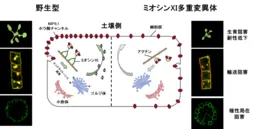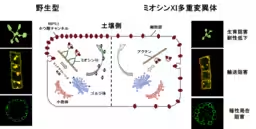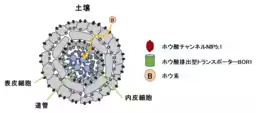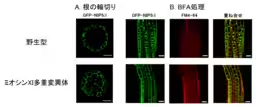

Uncovering the Polar Localization Mechanism of Nutrient Transport in Plants
Introducing a Breakthrough in Plant Science
A recent study sheds light on the critical role of
Myosin XI, a motor protein, in the polar localization of nutrient transport proteins in plants. This breakthrough not only enhances our understanding of how plants absorb nutrients but also paves the way for developing stronger crop varieties capable of thriving in nutrient-deficient soils.
The collaborative research effort led by Professor Motoki Tominaga from Waseda University and Professor Junpei Takano from Osaka Metropolitan University's Graduate School of Agriculture focused on the mechanisms behind boron transport in plants. Boron is a trace element essential for plant health; however, both excess and deficiency of boron can be detrimental. The research team utilized Arabidopsis thaliana, widely recognized as a model organism in plant research, to investigate how Myosin XI affects the boron transport protein NIP5;1.
The Significance of Myosin XI in Plant Growth
Traditionally, Myosin XI has been acknowledged for driving cytoplasmic streaming, the process by which the cytoplasm circulates within plant cells. However, this study is groundbreaking as it identifies a specific function of Myosin XI in maintaining the polar distribution of NIP5;1 on the cell membrane, which is crucial for efficient boron uptake from the soil. The team discovered that when the function of Myosin XI was disrupted, the proper localization of NIP5;1 was impaired, resulting in reduced tolerance to low boron conditions.
The protein NIP5;1 is situated on the outer side of the root cell membrane, which facilitates boron absorption. What remained unclear until now was the underlying mechanism for the polar localization of this protein. By knocking down Myosin XI, the team was able to observe that NIP5;1’s distribution pattern was disrupted, leading to sluggish endocytosis—the process through which substances are brought into the cell, which is critical for nutrient uptake.
Methodology and Findings
The researchers visualized NIP5;1 localization using a fluorescent protein marker, GFP. They complemented their findings with another contrasting agent, the lipophilic dye FM4-64, to study the endocytic pathways involved. The results revealed that Myosin XI-deficient plants exhibited an over 60% delay in endocytosis speed and a complete loss of polar localization of NIP5;1. This disruption indicates that Myosin XI plays an indispensable role in facilitating the proper function of nutrient transport proteins.
Implications for Biotechnology
The insights gained from this research extend beyond basic plant biology. By elucidating the relationship between Myosin XI and nutrient transport mechanisms in plants, the study opens new avenues for biotechnological applications. Given the pressing challenges of global food security and the need for sustainable agricultural practices, understanding how plants manage nutrient absorption can lead to innovative strategies for improving crop resilience in low-nutrient environments.
Essentially, maintaining polarity in nutrient transport proteins could uncover further complexities in plant nutrient uptake, influencing how we approach crop science and biotechnology. This paves the way for adaptations in farming practices, particularly in regions stricken with low soil fertility and ecological stressors.
Future Research Directions
Despite the significant findings, several questions remain unanswered, particularly regarding how Myosin XI specifically interacts with NIP5;1 during endocytosis. Future studies are poised to deploy multiple fluorescent markers to visualize the endocytic processes accurately, helping define Myosin XI's involvement further. Researchers aim to investigate whether Myosin XI directly transports vesicles containing NIP5;1, thereby adding another layer to our understanding of nutrient transport mechanisms.
Conclusion
Through this comprehensive study, the team has illuminated the unseen yet critical challenges faced by plants in nutrient delivery, emphasizing the role of Myosin XI as a conductor in this process. Understanding these mechanisms offers the promise of resilient crops that can perform in less than ideal conditions, vital for facing the challenges posed by climate change and nutrient scarcity in agriculture. This research, published in the prestigious journal Plant Physiology and Biochemistry, not only enhances our grasp of plant biology but also stands to impact agricultural biotechnology profoundly. Read the full research article here.




Topics Other)










【About Using Articles】
You can freely use the title and article content by linking to the page where the article is posted.
※ Images cannot be used.
【About Links】
Links are free to use.